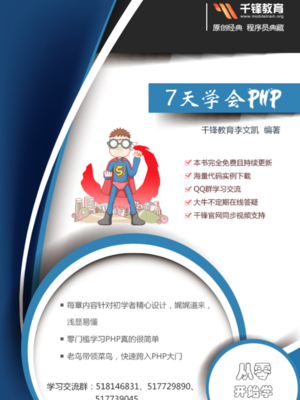©
本文档使用
php中文网手册 发布
Vuex Actions
action 和 mutation 类似,区别在于:
action 不改变状态,只提交(commit) mutation。
action 可以包含任意异步操作。
让我们注册一个简单的 action:
const store = new Vuex.Store({
state: {
count: 0
},
mutations: {
increment (state) {
state.count++
}
},
actions: {
increment (context) {
context.commit('increment')
}
}
})
Action 处理函数接收一个上下文对象(context object),该对象提供了跟 store 实例相同的方法/属性,因此你可以调用 context.commit 提交一个 mutation,或者通过 context.state 和 context.getters 访问 state 和 getters。稍后我们会介绍 Modules,我们将看到为什么上下文对象 (context object) 不是 store 实例自身。
在实践中,我们经常用到 ES2015 参数解构 来简化代码(特别是我们要多次调用 commit 的时候):
actions: {
increment ({ commit }) {
commit('increment')
}
}分发(Dispatch) Action
使用 store.dispatch 方法触发 action。
store.dispatch('increment')
这看起来很蠢:如果我们想增加 count,为什么我们不直接调用 store.commit('increment')?回想起mutation 必须是同步函数 了吗?action 可以不是同步函数。我们可以在 action 回调函数中执行 异步操作:
actions: {
incrementAsync ({ commit }) {
setTimeout(() => {
commit('increment')
}, 1000)
}
}action 同样支持 payload 格式和对象风格的 dispatch:
// dispatch 传入 payload
store.dispatch('incrementAsync', {
amount: 10
})
// dispatch 传入一个对象
store.dispatch({
type: 'incrementAsync',
amount: 10
})日常生活行为中,更实际的例子是购物车结帐,涉及调用异步 API和分发多重 mutations:
actions: {
checkout ({ commit, state }, payload) {
// 把当前购物车的商品备份起来
const savedCartItems = [...state.cart.added]
// 发送结帐请求,并愉快地清空购物车
commit(types.CHECKOUT_REQUEST)
// 购物 API 接收一个成功回调和一个失败回调
shop.buyProducts(
products,
// 成功操作
() => commit(types.CHECKOUT_SUCCESS),
// 失败操作
() => commit(types.CHECKOUT_FAILURE, savedCartItems)
)
}
}注意,我们执行的是一个异步操作的流程,并通过提交 action 来记录其副作用(状态变化)。
组件中分发 Action
使用 this.$store.dispatch('xxx')(需要根组件中注入 store )在组件中分发 action,使用 mapActions 工具函数,映射组件方法到调用 store.dispatch:
import { mapActions } from 'vuex'
export default {
// ...
methods: {
...mapActions([
'increment' // 映射 this.increment() 到 this.$store.dispatch('increment')
]),
...mapActions({
add: 'increment' // map this.add() to this.$store.dispatch('increment')
})
}
}组合多个 Action
Action 通常是异步的,所以我们如何知道一个 action 何时完成?更重要的是,我们如何组合多个 action 一起操作复杂的异步流程?
第一件事是知道 store.dispatch 返回『action 回调函数被触发后的返回值』,所以你可以在 action 中返回一个 Promise 对象。
actions: {
actionA ({ commit }) {
return new Promise((resolve, reject) => {
setTimeout(() => {
commit('someMutation')
resolve()
}, 1000)
})
}
}现在你可以这么做:
store.dispatch('actionA').then(() => {
// ...
})然后在另一个 action :
actions: {
// ...
actionB ({ dispatch, commit }) {
return dispatch('actionA').then(() => {
commit('someOtherMutation')
})
}
}最后,如果我们使用 async / await,很快落地的 JavaScript 特性,我们可以这样组合我们的 action:
// 假定 getData() and getOtherData() 返回的是 Promise
actions: {
async actionA ({ commit }) {
commit('gotData', await getData())
},
async actionB ({ dispatch, commit }) {
await dispatch('actionA') // 等待 actionA 结束
commit('gotOtherData', await getOtherData())
}
}
store.dispatch可能会在不同模块中,触发多个 action 回调函数。在这种情况下,返回值是一个 Promise 对象,该对象在所有被触发的回调都 resolve 之后自己再 resolve。
